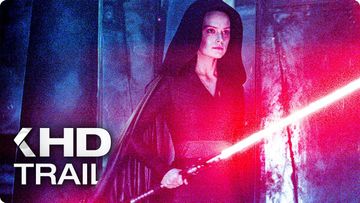Background on the creation & production of the Star Wars sequel trilogy
Discover the Epic Conclusion to the Star Wars Sequel Trilogy!
The Star Wars Sequel Trilogy, consisting of the films "Star Wars: Episode VII - The Force Awakens" (2015) , "Star Wars: Episode VIII - The Last Jedi" (2017) and "Star Wars: Episode IX - The Rise of Skywalker" (2019) , was created by directors J.J. Abrams and Rian Johnson and continued the legendary space opera created by George Lucas. The trilogy was the subject of much anticipation and discussion among Star Wars fans and featured a mix of new characters, familiar faces and a continuing storyline in the conflict between the First Order and the Resistance.
Background to the creation and production
The idea for a sequel to the Star Wars saga emerged after Disney's acquisition of Lucasfilm in 2012. J.J. Abrams was chosen to direct the first film, and he also played a significant role in the development of the plot. Production of the trilogy began with the clear goal of preserving the essence of Star Wars while introducing fresh elements to make the story appealing to new and old fans alike.
The plot was planned out in broad strokes, but each director had the freedom to bring their creative vision to the movie. This led to a certain amount of controversy and debate over the continuity of the trilogy and the treatment of established characters.
Plot summary
Episode 7: The Force Awakens (2015)
The story picks up approximately 30 years after the events of "Return of the Jedi". The galaxy is under threat from the First Order, a militaristic organization formed from the remnants of the Empire. The Resistance, led by General Leia Organa, fights against the oppression of the First Order. The main character, Rey, a scrap collector on the desert planet Jakku, discovers her Force-sensitive abilities and is drawn into the conflict. Finn, a renegade stormtrooper, joins the Resistance, and the legendary Han Solo returns to action to influence the fate of the galaxy. The film ends with the appearance of Luke Skywalker, who had left a map to locate his whereabouts after his disappearance.
Episode 8: The Last Jedi (2017)
Fan expectations and theories were challenged when director Rian Johnson took an unpredictable direction. Rey finds Luke Skywalker, who has gone into seclusion on a remote planet called Ahch-To. Luke is reluctant to join the conflict and reveals the dark details of his past. At the same time, General Leia attempts to retain leadership of the Resistance, while reluctant hero Poe Dameron is confronted by the hierarchy. Kylo Ren, the leader of the First Order, strives for power and doubts his path of evil. The movie breaks with some traditions and ends with a symbolic act of resistance to the oppression of the First Order.
Episode 9: The Rise of Skywalker (2019)
J.J. Abrams returned as director to bring the trilogy to a conclusion. The search for the re-emerged Emperor Palpatine forms the central conflict. Rey, who discovers her connection to Kylo Ren, learns of her parentage and her enormous potential for power. The Resistance faces the ultimate threat from the resurgent First Order and Palpatine's Sith fleet. The heroes search for a way to unite the galaxy and confront evil. Sacrifices, unexpected twists and the final confrontation between Rey and Palpatine characterize the climax. The movie concludes with a glimpse of hope and a look into the future of the Star Wars galaxy.
Overall, the sequel trilogy tried to shine with slapstick comedy in the plot. However, it was criticized by some fans, especially in terms of plot continuity and the use of established characters. Nevertheless, it has attracted new generations of Star Wars fans and further fueled discussions about the mythological elements of the saga. The trilogy has shown that Star Wars is timeless and that the Force continues to have a strong presence in the cinematic landscape.
You might like this video
